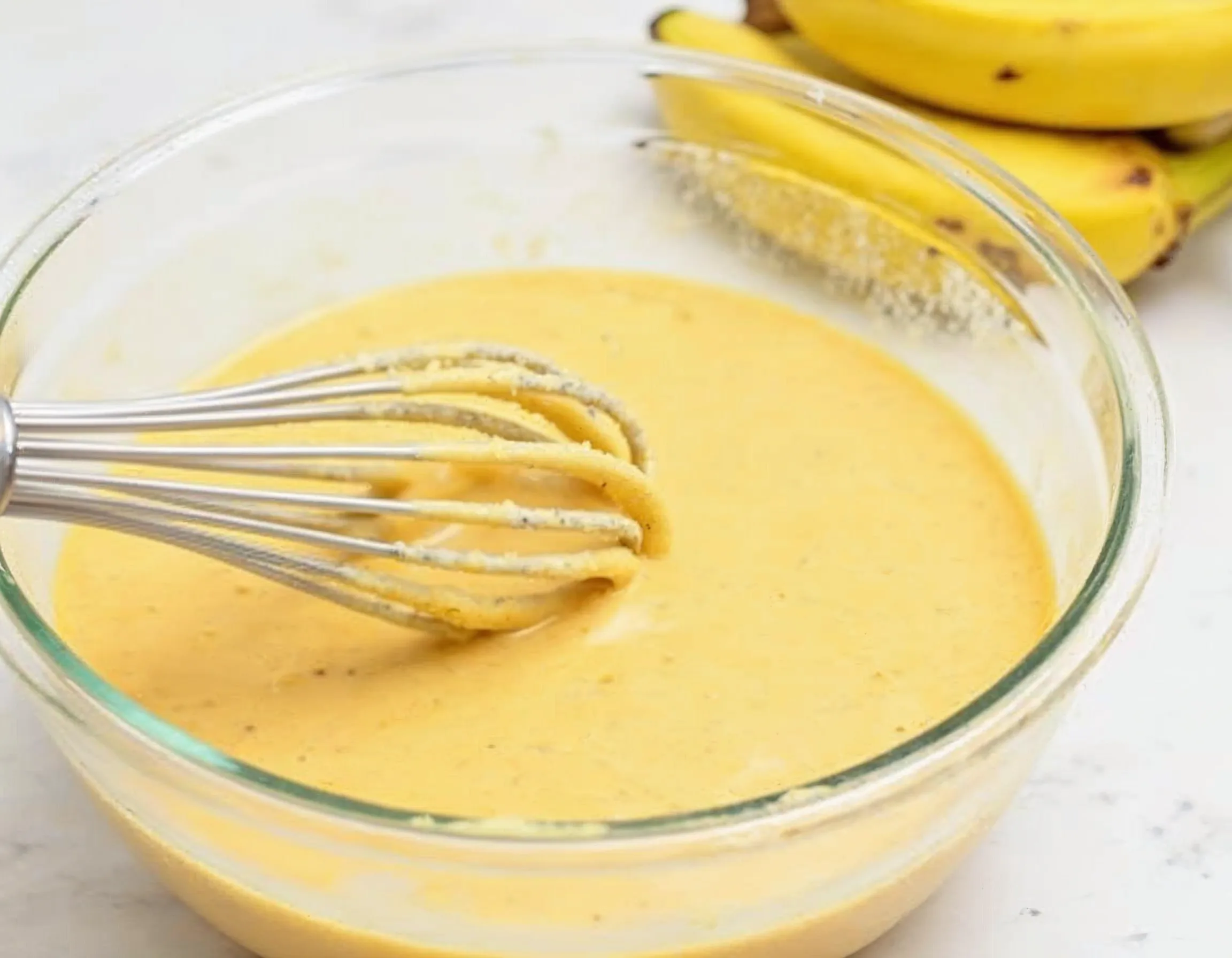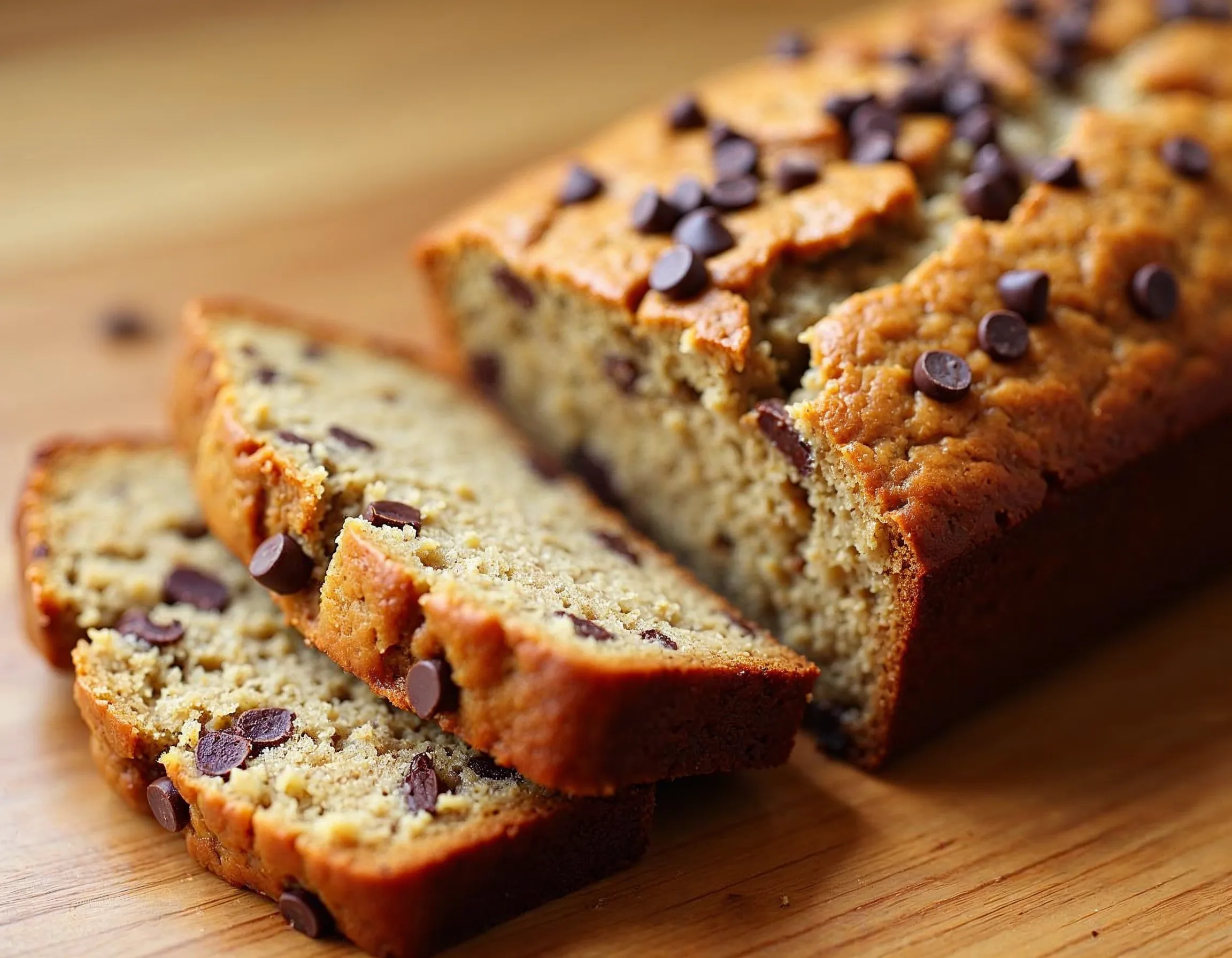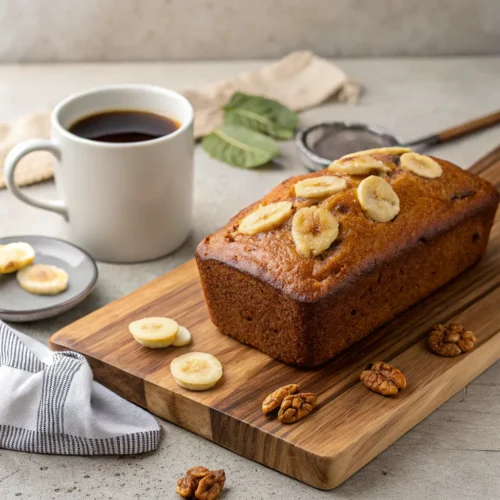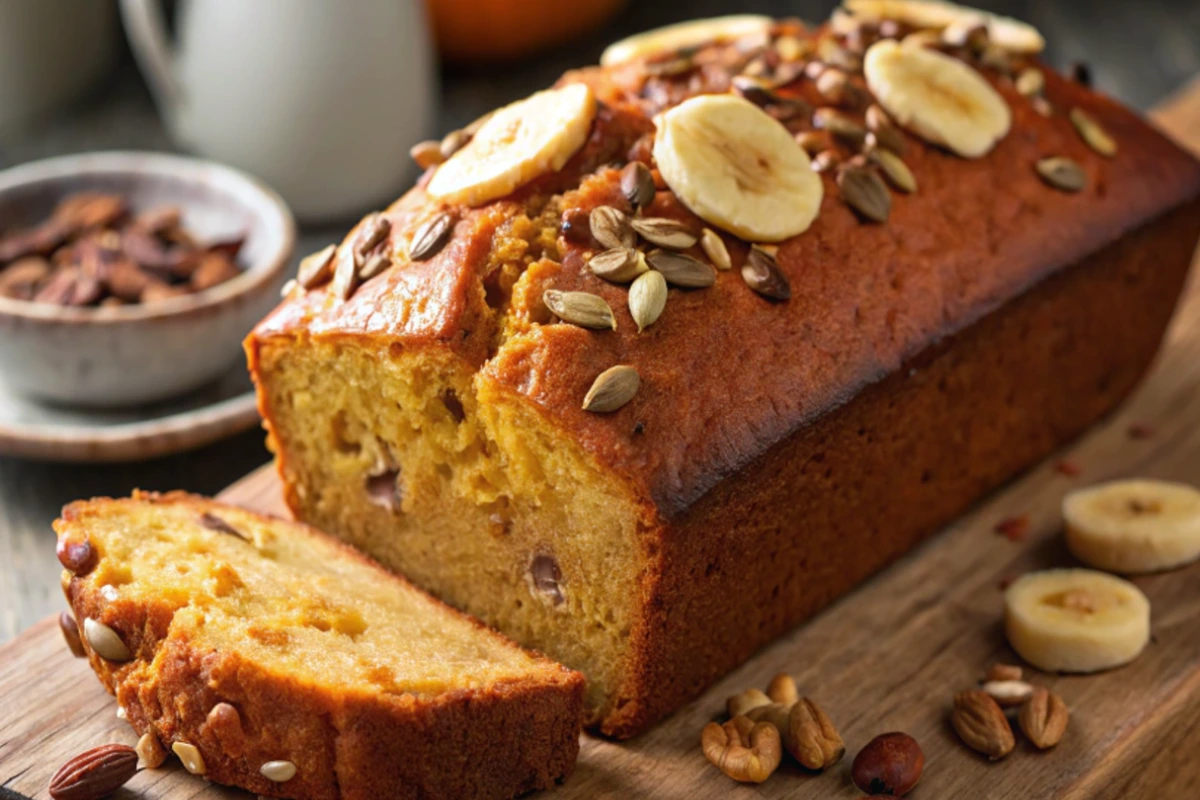banana bread recipe simply recipes is the ultimate comfort food—a sweet, moist loaf that’s perfect for breakfast, a midday snack, or even dessert. Loved by bakers of all skill levels, it’s a recipe that never goes out of style. Whether you’re a beginner or a seasoned pro, there’s something magical about transforming overripe bananas into a loaf of golden perfection.
This guide will walk you through everything you need to know about banana bread, from its timeless appeal to pro tips for achieving the perfect texture. Along the way, we’ll explore ingredient breakdowns, baking techniques, variations, and answers to common questions. You’ll also find an easy, foolproof recipe to help you create the best banana bread ever.
By the end of this article, you’ll be equipped to bake a loaf that’s not only delicious but also fits your unique preferences—be it classic, vegan, gluten-free, or decadently loaded with extras. Let’s dive into the world of banana bread and uncover the secrets to a recipe that’s as versatile as it is beloved.
Table Of Cintents
Why Banana Bread Is a Timeless Favorite
Banana bread is more than just a dessert—it’s a slice of comfort and nostalgia. Loved by home bakers and dessert enthusiasts alike, this simple yet versatile treat has stood the test of time for a reason. Let’s delve into what makes banana bread so special and why it remains a staple in kitchens worldwide.
The Comforting Origins of Banana Bread
Banana bread dates back to the 1930s, when thrifty bakers began transforming overripe bananas into delicious baked goods. The Great Depression sparked innovation, and recipes like banana bread became popular because they made the most of every ingredient. With its simple preparation and minimal ingredients, banana bread quickly became a symbol of resourcefulness and warmth in homes.
Why People Love Banana Bread Across Generations
What’s not to love about banana bread? It’s a crowd-pleaser that satisfies your sweet tooth while offering a hearty, homemade feel. Its versatility allows for endless variations, from adding nuts and chocolate chips to creating vegan or gluten-free versions. Banana bread is also incredibly forgiving—perfect for beginner bakers and pros alike. Whether served at breakfast, as a snack, or a dessert, its universal appeal makes it a timeless favorite.
How Banana Bread Fits in Modern Baking Trends
Today, banana bread is more popular than ever, thanks to its simplicity and adaptability. During the global pandemic, it saw a massive resurgence as people turned to comfort foods and stress-relieving activities like baking. With modern twists like healthier versions and gourmet toppings, banana bread has found its place in Instagram-worthy kitchens while retaining its old-school charm.
Banana bread has remained an icon in the baking world because it offers more than just a taste—it provides memories, comfort, and creativity. Its enduring popularity proves that some recipes never go out of style.
Ingredients Breakdown for the Perfect Banana Bread

Crafting the perfect banana bread starts with understanding its key ingredients. Each one plays a vital role in achieving the moist, flavorful, and fluffy texture you crave. Here’s a breakdown of the essentials and how to customize your recipe for a personal touch.
Essential Ingredients Explained
1. Ripe Bananas: The Star Ingredient
- Ripe bananas are the foundation of banana bread. The more overripe they are, the sweeter and more flavorful your bread will be. Brown spots or fully black bananas are ideal for a rich, natural sweetness.
2. Flour: The Building Block
- All-purpose flour is the most common choice for banana bread, offering a balanced texture. For a lighter option, consider using half all-purpose and half whole wheat flour. Gluten-free alternatives like almond or oat flour also work well.
3. Sugar: Adding Sweetness
- Most recipes use granulated sugar, but brown sugar can be added for a deeper, caramel-like flavor. Want to cut calories? Swap sugar with honey, maple syrup, or a sugar substitute like Stevia.
4. Eggs: The Binding Agent
- Eggs add structure and moisture to banana bread. For a vegan option, use flaxseed meal mixed with water as a substitute.
5. Fats: Enhancing Moisture
- Butter gives a rich flavor, while oil (such as coconut or vegetable oil) ensures a moist texture. Applesauce can also replace fats for a healthier alternative.
Optional Additions for Customizing Your Recipe
1. Nuts and Seeds
- Add walnuts, pecans, or sunflower seeds for a crunchy texture and nutty flavor.
2. Chocolate Chips and Fruits
- Chocolate chips add indulgence, while dried fruits like raisins or cranberries offer a sweet, tangy twist.
3. Spices and Extracts
- A pinch of cinnamon, nutmeg, or vanilla extract elevates the flavor profile.
Banana bread ingredients are as flexible as they are essential. Mastering the balance of these components will set the stage for a moist, fluffy loaf every time.
Step-by-Step Guide to Making Banana Bread

Making banana bread is as simple as combining a few pantry staples and baking them to golden perfection. The beauty of this recipe lies in its versatility and ease. Follow these step-by-step instructions to create a loaf that’s moist, fluffy, and bursting with flavor.
Preparing the Ingredients and Tools
1. Gather Your Ingredients
- Start by ensuring all your ingredients are at room temperature. This helps the batter mix evenly.
- Use overripe bananas with plenty of brown spots—they’re sweeter and mash easily.
2. Tools You’ll Need
- Mixing bowls of various sizes.
- A whisk, spatula, and hand mixer (optional for creaming butter and sugar).
- A standard 9×5-inch loaf pan.
- Non-stick spray or parchment paper for lining the pan.
3. Preheat Your Oven
- Set the oven to 350°F (175°C). Proper preheating ensures even baking.
4. Prepare the Pan
- Lightly grease your loaf pan with non-stick spray or line it with parchment paper to prevent sticking.
Mixing the Batter Like a Pro
1. Mash the Bananas
- Peel 3–4 overripe bananas and mash them with a fork or potato masher until smooth. A few small lumps are okay for added texture.
2. Cream the Butter and Sugar
- In a large bowl, beat butter and sugar together until light and fluffy. If using oil or applesauce as a substitute, whisk until well combined.
3. Add Wet Ingredients
- Mix in the eggs, one at a time, followed by vanilla extract and the mashed bananas. Stir until smooth.
4. Combine Dry Ingredients
- In a separate bowl, whisk together the flour, baking soda, salt, and optional spices (like cinnamon or nutmeg).
5. Mix It All Together
- Gradually fold the dry ingredients into the wet mixture. Be careful not to overmix—stir just until no streaks of flour remain. Overmixing can result in dense banana bread.
Baking the Bread to Perfection
1. Pour and Smooth
- Pour the batter into the prepared loaf pan, spreading it evenly. For a decorative touch, place a halved banana on top before baking.
2. Bake
- Place the pan in the preheated oven and bake for 55–65 minutes. Check for doneness by inserting a toothpick into the center; it should come out clean.
3. Cool Completely
- Allow the bread to cool in the pan for 10 minutes before transferring it to a wire rack. Let it cool completely before slicing to prevent crumbling.
By following these steps, you’ll bake a perfect banana bread loaf every time—moist, fluffy, and irresistible.
Pro Tips for Moist and Fluffy Banana Bread
The hallmark of great banana bread is its moist, tender texture and perfect fluffiness. While the recipe itself plays a key role, small tweaks and techniques can elevate your loaf to bakery-level perfection. Here are some expert tips to help you achieve a consistently moist and fluffy banana bread every time.
The Secret to Keeping Banana Bread Moist
1. Use Overripe Bananas
- Overripe bananas are not only sweeter but also packed with moisture. Ensure the bananas have plenty of brown spots or are nearly black for optimal results.
2. Don’t Skip the Fats
- Whether it’s butter, oil, or a substitute like applesauce, fats are essential for retaining moisture. For an ultra-moist loaf, consider using a combination of butter for flavor and oil for moisture.
3. Avoid Overbaking
- Baking too long dries out banana bread. Check for doneness around the 50-minute mark by inserting a toothpick into the center. If it comes out clean or with a few crumbs, it’s ready.
How to Achieve a Perfect Texture Every Time
1. Avoid Overmixing
- Stirring the batter too much activates gluten in the flour, leading to a dense loaf. Mix the ingredients just until combined for a light, fluffy texture.
2. Incorporate a Leavening Agent
- Baking soda or baking powder helps the bread rise, giving it an airy texture. Ensure these ingredients are fresh and measured correctly for the best results.
3. Add Sour Cream or Yogurt
- A dollop of sour cream or Greek yogurt in the batter enhances both moisture and fluffiness. It also adds a subtle tangy flavor that complements the sweetness of the bananas.
Mistakes to Avoid When Making Banana Bread
1. Using Under-Ripe Bananas
- Green or firm bananas lack the sweetness and softness needed for banana bread. If your bananas aren’t ripe enough, you can ripen them quickly in the oven.
2. Skipping Pan Preparation
- Failing to grease or line your loaf pan can cause sticking, making it difficult to remove the bread cleanly.
3. Baking at the Wrong Temperature
- Too high or too low a temperature can result in uneven baking. Always preheat your oven and use an oven thermometer for accuracy.
Mastering these tips will ensure your banana bread is consistently moist, fluffy, and absolutely delicious—perfect for impressing friends, family, or yourself!
Variations and Additions to Try
Banana bread is a wonderfully versatile treat that serves as a blank canvas for creativity. From dietary adaptations to indulgent add-ins, there are countless ways to personalize your loaf and make it uniquely yours. Here are some delicious variations and exciting additions to try.
Vegan and Gluten-Free Options
1. Vegan Banana Bread
- Substitute eggs with flaxseed meal (1 tablespoon flaxseed + 3 tablespoons water per egg).
- Use plant-based milk and oil or vegan butter for a dairy-free twist.
2. Gluten-Free Banana Bread
- Replace all-purpose flour with gluten-free flour blends. Almond flour, oat flour, or a mix of both works well.
- Add a teaspoon of xanthan gum to improve the texture if your flour blend doesn’t include it.
Decadent Add-Ins for Special Occasions
1. Chocolate Lovers’ Dream
- Fold in semisweet chocolate chips or chunks for a rich, gooey texture. White chocolate or dark chocolate chips also pair beautifully with bananas.
2. Nutty Banana Bread
- Add chopped walnuts, pecans, or almonds for crunch and a nutty flavor. Toast the nuts beforehand to enhance their taste.
3. Sweet and Tangy Mix-Ins
- Include dried fruits like raisins, cranberries, or chopped dates for bursts of sweetness. For a tropical flair, add shredded coconut or pineapple chunks.
Creative Twists: Banana Bread Muffins, Cakes, and More
1. Banana Bread Muffins
- Turn your banana bread batter into portable muffins. Simply divide the batter into a greased muffin tin and bake at 350°F (175°C) for 18–22 minutes.
2. Banana Bread Bundt Cake
- Use a bundt pan to create a more elegant presentation. Drizzle with a glaze made of powdered sugar and lemon juice for a finishing touch.
3. Savory Banana Bread
- Swap sugar for savory ingredients like cheese, herbs, or spices (e.g., rosemary or cayenne) for a unique twist.
Experimenting with these variations can transform your banana bread from a classic comfort food into an exciting culinary adventure. No matter the twist, it’s sure to be a hit!
Storing and Serving Banana Bread
Banana bread is a joy to bake, but it’s just as important to store and serve it properly to maintain its delicious flavor and texture. Whether you’re saving a slice for later or preparing to share it, these tips will ensure your banana bread stays fresh and enjoyable.
How to Properly Store Your Banana Bread
1. At Room Temperature
- Once your banana bread has completely cooled, wrap it tightly in plastic wrap or store it in an airtight container.
- Keep it at room temperature for up to 2–3 days. To prevent it from drying out, avoid exposing it to air.
2. Refrigeration Tips
- If you need to store banana bread for a longer period, place it in the refrigerator. Wrap it securely in plastic wrap or foil to retain moisture.
- Refrigerated banana bread stays fresh for up to 7 days. Allow slices to come to room temperature or warm them slightly before serving.
3. Freezing Banana Bread
- For extended storage, freeze your banana bread. Wrap the entire loaf or individual slices in plastic wrap, then place them in a resealable freezer bag.
- Frozen banana bread can last up to 3 months. Thaw it overnight in the refrigerator or at room temperature before enjoying.
Best Ways to Serve Banana Bread
1. Simple and Classic
- Enjoy banana bread on its own, warm or at room temperature, to appreciate its natural sweetness.
2. Toppings to Elevate the Flavor
- Spread slices with butter, cream cheese, or a drizzle of honey for an extra touch of indulgence.
- For a dessert-like treat, serve with a dollop of whipped cream or a scoop of vanilla ice cream.
3. Pairing Ideas
- Banana bread pairs beautifully with coffee, tea, or a glass of milk. It’s also a delightful addition to a brunch spread.
With proper storage and thoughtful serving ideas, you can savor every slice of your banana bread at its best—whether fresh out of the oven or saved for later.
The Healthier Side of Banana Bread
Banana bread can be as indulgent or as wholesome as you’d like it to be. With a few simple ingredient swaps, you can transform this classic treat into a healthier option that fits your dietary needs without sacrificing flavor or texture. Here’s how you can enjoy banana bread guilt-free!
Nutritional Insights on Banana Bread
1. Comparing Banana Bread to Regular Bread
- Traditional banana bread is richer and denser than normal bread, thanks to its sugar, fat, and banana content. While it’s higher in calories, it also provides potassium and dietary fiber from bananas.
2. Mindful Indulgence
- Banana bread is a sweet treat, but choosing healthier ingredients can make it a nutritious snack. Opting for whole grains, natural sweeteners, and healthy fats can lower its calorie count and boost its nutritional value.
Ingredient Swaps for a Healthier Recipe
1. Healthier Flours
- Swap out all-purpose flour for whole wheat flour to add fiber and nutrients. Almond flour is another great choice for a gluten-free, protein-rich alternative.
2. Natural Sweeteners
- Replace refined sugar with natural options like honey, maple syrup, or mashed dates. These alternatives provide sweetness along with added nutrients.
3. Healthy Fats
- Use coconut oil or unsweetened applesauce instead of butter for a lighter, heart-healthy version of banana bread. Greek yogurt is another option that adds moisture and protein.
4. Extra Nutritional Boosts
- Add mix-ins like chia seeds, flaxseeds, or hemp hearts for omega-3s and fiber. Incorporate nuts for healthy fats or blueberries for a burst of antioxidants.
Why Balance Is Key
While banana bread can be made healthier, it’s still important to enjoy it in moderation. Pair it with a source of protein, like a handful of nuts or a dollop of Greek yogurt, to create a more balanced snack or breakfast option.
With these simple adjustments, you can indulge in banana bread while staying on track with your health goals. It’s proof that nutritious and delicious can go hand in hand!
Answering Your FAQs About Banana Bread
Banana bread is a beloved classic, but it can spark many questions for both novice and experienced bakers. From common mistakes to health considerations, we’ve answered the most frequently asked questions to help you master the art of banana bread.
What Is the Number One Mistake Made When Making Banana Bread?
The most common mistake is overmixing the batter. When you overmix, the gluten in the flour develops too much, resulting in a dense and chewy texture. To avoid this, gently fold the dry ingredients into the wet mixture until just combined—lumps are okay!
What Are the Ingredients in Banana Bread?
Banana bread typically includes:
- Ripe Bananas: For sweetness and moisture.
- Flour: Usually all-purpose, though whole wheat or gluten-free options can be used.
- Sugar: Granulated or brown sugar for sweetness.
- Eggs: For binding and structure.
- Butter or Oil: Adds richness and moisture.
- Leavening Agents: Baking soda or baking powder to help it rise.
- Optional ingredients include nuts, chocolate chips, or spices for added flavor.
Why Does Banana Bread Have to Sit Overnight?
Allowing banana bread to rest overnight enhances its flavor and texture. The resting period lets the moisture redistribute throughout the loaf, making it even softer and more flavorful. If you can wait, it’s worth it!
Is Banana Bread Healthier Than Normal Bread?
Banana bread is generally sweeter and richer than regular bread, so it contains more sugar and fat. However, it also offers nutritional benefits like potassium, fiber, and vitamins from bananas. Healthier versions with whole grains and natural sweeteners can make it a more balanced option.
Is It OK to Eat Banana Bread Every Day?
Yes, in moderation. Eating a small slice of banana bread daily can be part of a balanced diet, especially if it’s made with healthier ingredients like whole wheat flour and less sugar. Pair it with a protein source to keep you full longer.
What Is the Number One Healthiest Bread to Eat?
While banana bread is a treat, the healthiest breads are typically whole-grain or sprouted-grain varieties. These options are lower in sugar and higher in fiber and nutrients, making them great for everyday consumption.
By addressing these common questions, you’re now better equipped to bake, serve, and enjoy banana bread like a pro.
Troubleshooting: Common Issues with Banana Bread
Even with the best recipes, banana bread doesn’t always turn out as planned. Whether it’s too dry, undercooked, or dense, small missteps can impact your loaf’s quality. Here’s a guide to identifying and fixing the most common banana bread problems.
Why Did My Banana Bread Turn Out Dry?
1. Overbaking
- Baking for too long is the primary cause of dry banana bread. Always check for doneness around the 50-minute mark. Insert a toothpick in the center—if it comes out clean or with a few crumbs, it’s done.
2. Not Enough Moisture
- Using under-ripe bananas or skipping key ingredients like butter, oil, or eggs can result in dryness. Ensure your bananas are overripe and consider adding a tablespoon of yogurt or applesauce to the batter for extra moisture.
How to Fix Undercooked Banana Bread
1. Check Oven Temperature
- An inaccurate oven temperature can lead to an undercooked center. Use an oven thermometer to ensure your oven is calibrated correctly.
2. Return to the Oven
- If your banana bread is undercooked, cover it with foil to prevent the top from burning and bake it for an additional 10–15 minutes.
Preventing a Dense or Gummy Texture
1. Avoid Overmixing
- Overmixing the batter develops gluten, which can make your banana bread dense and gummy. Stir just until the ingredients are combined.
2. Check Your Leavening Agents
- Ensure your baking soda or baking powder is fresh. Old or expired leavening agents can prevent the bread from rising properly.
3. Use the Right Ratio
- Too much banana or wet ingredients can make the bread gummy. Stick to the recipe’s measurements, and don’t overload the batter with mix-ins like chocolate chips or nuts.
With these troubleshooting tips, you can fix or prevent common banana bread issues, ensuring each loaf is perfectly moist, fluffy, and delicious.
The Ultimate Recipe: Simply Recipes Banana Bread
Ready to bake the best banana bread ever? Here’s a tried-and-true recipe that’s simple to follow and guarantees a moist, fluffy loaf bursting with banana flavor. This foolproof recipe will quickly become your go-to for any occasion.
Ingredients
Wet Ingredients:
- 3–4 overripe bananas (mashed)
- ½ cup (1 stick) unsalted butter, melted (or ½ cup oil for a dairy-free option)
- ¾ cup granulated sugar (or brown sugar for a richer flavor)
- 2 large eggs, room temperature
- 1 teaspoon vanilla extract
Dry Ingredients:
- 1½ cups all-purpose flour (or whole wheat flour for a healthier twist)
- 1 teaspoon baking soda
- ½ teaspoon salt
- Optional: 1 teaspoon cinnamon or nutmeg for added flavor
Add-Ins (Optional):
- ½ cup chopped walnuts or pecans
- ½ cup chocolate chips
Step-by-Step Instructions
1. Preheat and Prepare
- Preheat your oven to 350°F (175°C). Grease a 9×5-inch loaf pan or line it with parchment paper.
2. Mash the Bananas
- In a large mixing bowl, mash the bananas until smooth. A few lumps are okay for texture.
3. Mix Wet Ingredients
- Add melted butter, sugar, eggs, and vanilla extract to the mashed bananas. Whisk until fully combined.
4. Combine Dry Ingredients
- In a separate bowl, whisk together the flour, baking soda, salt, and optional spices.
5. Incorporate Wet and Dry Mixtures
- Gradually fold the dry ingredients into the wet mixture. Stir until just combined; do not overmix.
6. Add Optional Mix-Ins
- Gently fold in nuts, chocolate chips, or any other add-ins you prefer.
7. Pour and Bake
- Pour the batter into the prepared loaf pan and smooth the top with a spatula.
- Bake for 55–65 minutes, or until a toothpick inserted into the center comes out clean.
8. Cool and Enjoy
- Let the bread cool in the pan for 10 minutes, then transfer to a wire rack to cool completely before slicing.
Conclusion: Why Simply Recipes Banana Bread Is the Go-To Recipe
Banana bread is a timeless classic, and the Simply Recipes Banana Bread recipe truly stands out as the ultimate choice for bakers of all skill levels. Not only is it simple to prepare, but it’s also incredibly adaptable, making it a perfect fit for any occasion. Furthermore, its guaranteed moist and fluffy results consistently delight anyone who tries it.
Whether you’re seeking comfort food, experimenting with healthier options, or treating your loved ones to a homemade delight, this recipe undoubtedly has something for everyone. Additionally, with the right balance of sweetness and texture, it’s a foolproof way to turn overripe bananas into a loaf of golden perfection.
By following the tips, variations, and troubleshooting advice shared in this guide, you can confidently bake a loaf that’s not only delicious but also tailored to your unique preferences. Indeed, banana bread isn’t just a recipe—it’s a tradition, a creative outlet, and a reminder of the simple joys in life.
So, as you preheat that oven and grab those bananas, let Simply Recipes Banana Bread become your favorite baking tradition. Happy baking!
Stay Connected for More Delicious Recipes!
Love trying new and exciting recipes? Don’t miss out! Follow me for daily kitchen inspiration, exclusive cooking tips, and mouthwatering food ideas.
🔹 Facebook: Follow me here
🔹 Instagram: Join me here
🔹 Pinterest: Join me here
Let’s turn every meal into a masterpiece—one recipe at a time! Tag me when you try my dishes, and share your creations. Happy cooking! 🍓🔥 #PanoramaRecipes

Simply Perfect Banana Bread
Equipment
- 1 Mixing bowls (large and medium)
- 1 Whisk and spatula
- 1 9×5-inch loaf pan
- 1 Non-stick spray or parchment paper
- 1 Fork or potato masher
- 1 Wire rack
Ingredients
- Wet Ingredients:
- 3 –4 overripe bananas mashed
- ½ cup 1 stick unsalted butter, melted (or ½ cup oil for a dairy-free option)
- ¾ cup granulated sugar or brown sugar for a richer flavor
- 2 large eggs room temperature
- 1 teaspoon vanilla extract
- Dry Ingredients:
- 1½ cups all-purpose flour or whole wheat flour for a healthier twist
- 1 teaspoon baking soda
- ½ teaspoon salt
- Optional: 1 teaspoon cinnamon or nutmeg for added flavor
- Add-Ins Optional:
- ½ cup chopped walnuts or pecans
- ½ cup chocolate chips
Instructions
- Preheat and Prepare:
- Preheat your oven to 350°F (175°C). Grease a 9×5-inch loaf pan or line it with parchment paper.
- Mash the Bananas:
- In a large mixing bowl, mash the bananas until smooth. A few small lumps are okay for texture.
- Mix Wet Ingredients:
- Add the melted butter, sugar, eggs, and vanilla extract to the mashed bananas. Whisk until fully combined.
- Combine Dry Ingredients:
- In a separate medium bowl, whisk together the flour, baking soda, salt, and optional spices.
- Incorporate Wet and Dry Mixtures:
- Gradually fold the dry ingredients into the wet mixture. Stir gently until just combined—do not overmix.
- Add Optional Mix-Ins:
- If using chocolate chips, nuts, or other mix-ins, fold them in gently at this stage.
- Pour and Bake:
- Pour the batter into the prepared loaf pan, spreading it evenly with a spatula.
- Bake for 55–65 minutes, or until a toothpick inserted into the center comes out clean.
- Cool and Serve:
- Allow the banana bread to cool in the pan for 10 minutes, then transfer it to a wire rack to cool completely. Slice and enjoy!
Notes
Store banana bread at room temperature for up to 3 days or freeze for up to 3 months.
Add a decorative banana slice on top of the batter before baking for a visually appealing finish.

